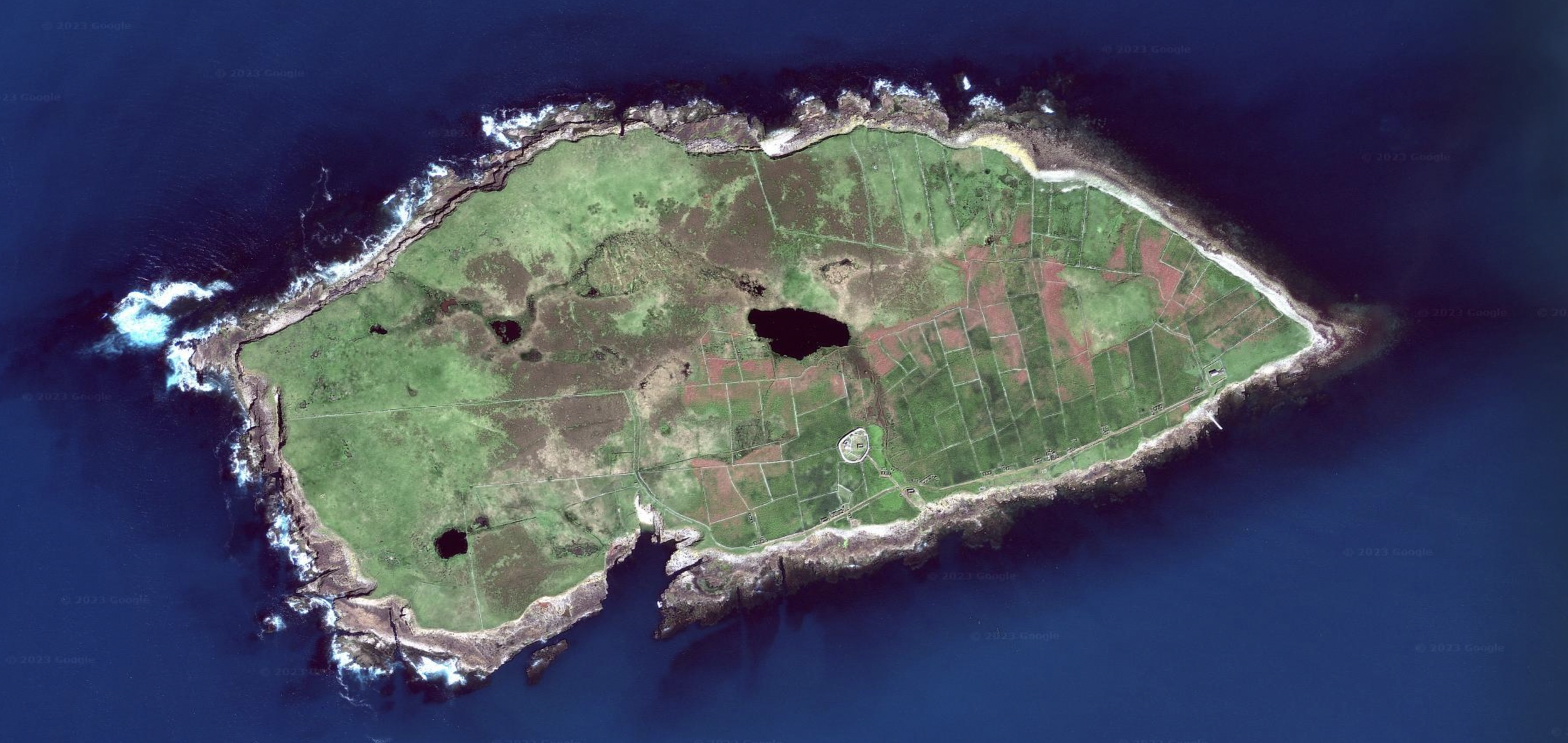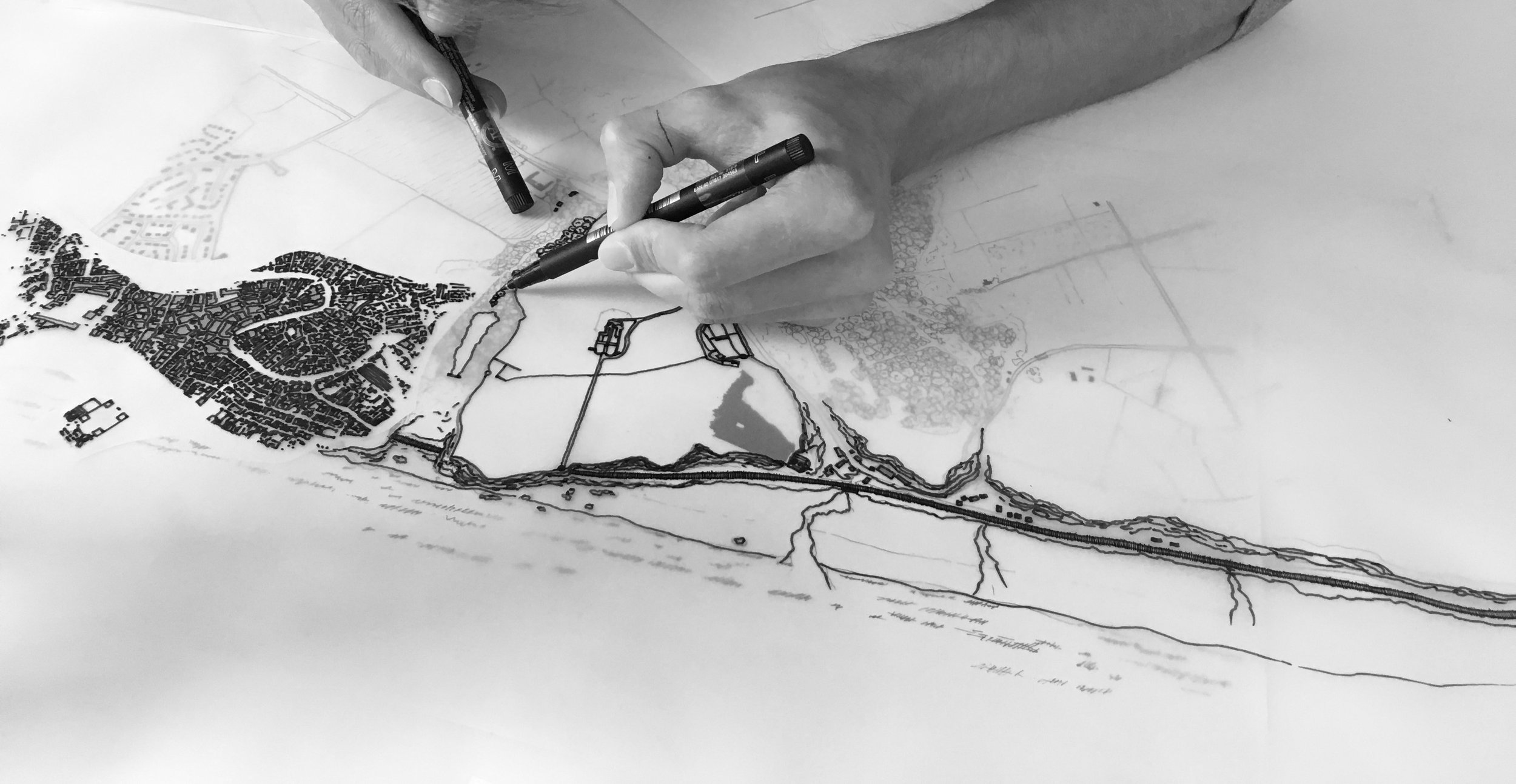Waterlands V
Memory Works
SuperStudio 7 — From Beckett to Butler Yeats
Professor Paul Clarke, Professor of Architectural Design, Studio Lead
Peter McNie, Lecturer in Architecture: Studio Support

Over the past few years our WaterLands Studio has explored different landscape conditions associated with the interaction of land and water. From the North Coast, to Lough Neagh, to following the river Bann, we have made a series of journeys which have revealed different landscapes, communities and many opportunities for projects.
This year the studio will adopt a similar strategy, with a new trajectory, moving across a wide range of locations, scales and contexts, in what we have called from Beckett to Butler Yeats. These two famous Irish writers are associated with particular landscapes: literary and physical. From Enniskillen where Beckett went to school, to Sligo and the poetry and paintings of the Yeats family. Both towns have literary and cultural festivals named after these writers and with which we want to engage. We will be exploring different themes based around writers, artists and festivals. We will be collaborating with the painter Dougal McKenzie and his students in the School of Art.
Our journey will begin at Enniskillen, moving through lower Lough Erne with all of its islands, along the western coastline heading south past the island of Inishmurray out at sea, and into Sligo bay and towards Lough Gill. Our drawings will consider and map different readings of the landscape to understand the different patterns of use and context, in order to provide a research informed basis within which projects can develop and evolve. Our first project will be based on the remarkable island of Inishmurray and to design an intervention which will seek to draw out its history, and layers of time, implicit in its stones and structures.
Drawing is our modus operandi and research methodology. Questions of why and how drawings are made, and how they are used and interpreted to propose buildings, spaces and landscapes will form the central ethos of our studio. Each drawing will be considered as an important ‘material’ in its own right. The making of physical models is also a key part of how we work. We will be working individually, collaboratively, collectively, digitally, and by hand. Drawing as such, will become the ‘language’ of our studio, to accompany us on our journey.

STUDIO RESEARCH STATEMENT
Research Questions and Theme
By considering the territory of architectural drawing as a culturally situated practice, and as a multifaceted methodology of research important insights into the different ‘landscapes’ of personal, professional and educational creativity are explored. What are the different ways drawings are produced, and who for? What dimensions do drawings offer in architecture beyond that of a quantitative commodity? Within this wider research area the work of the studio explores limits, frames and translations across scale, place and narrative. The ‘enabling fiction’ of drawings, described by Robin Evans, allows for a multiplicity of practices, a diversity of media, and non-linear explorations of compositional and creative strategies. Drawing is considered as its own material substance. The physical contexts explored in the studio are directly related to differing aspects of water across the Northern Ireland landscape, both in physical and narrative terms, as rivers, coastlines, bogs, hydrological cycles and ecosystems, while also being considered as abstracted maps, waterlogs, collages, timepieces, and so on.
Description and Methods
Drawing as a register of meaning evidences a multiplicity of philosophical, physical, qualitative, quantitative and phenomenological and operational tactics in architecture, with drawing as the primary ‘currency’ of the profession. The studio work aims to explore and unravel: the translatory space of drawing; the cognitive connections between hand and eye; and an exploratory dialogue between hand drawing and digital means. Through considering this space between the digital and the analogue, and between the idea and the building, this research aims to situate and contextualise different intellectual positions and knowledge constructs within a wider cultural and social framework analysis.
Findings and Dissemination
By recording and documenting the multiple practices, and different mediums of drawing, and in particular by examining the relationship of drawing within architectural education, this research aims to uncover new insights through and on drawing while developing and consolidating existing work in this field, such as the documentary film Drawing on Life, the travelling exhibition The Secret Laboratory and the publication and folio of drawings Notations. Dissemination is by studio exhibition, publication and symposia.

PROJECTS AND INSPIRATION










































For more information on this SuperStudio, please contact Paul Clarke



